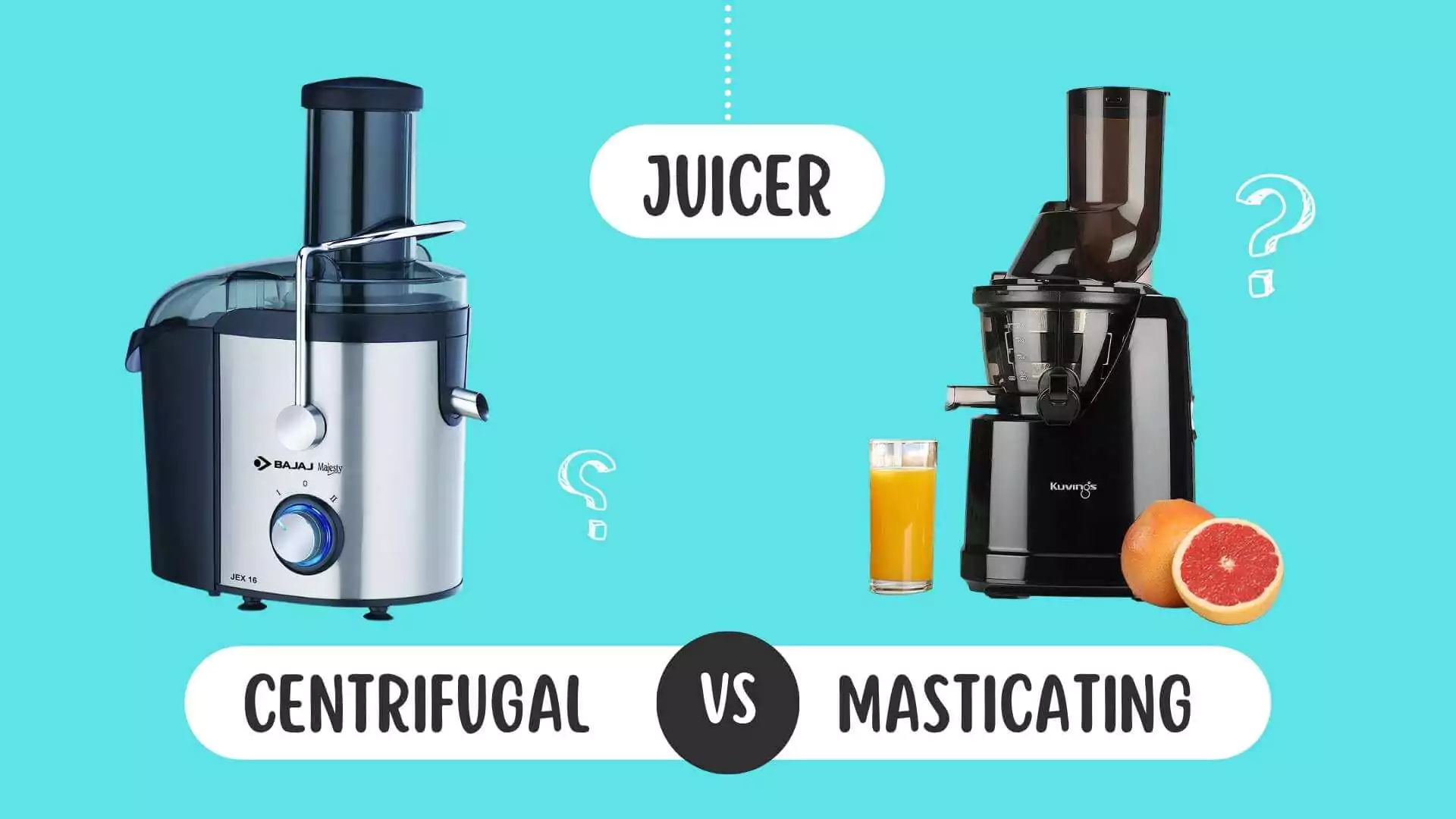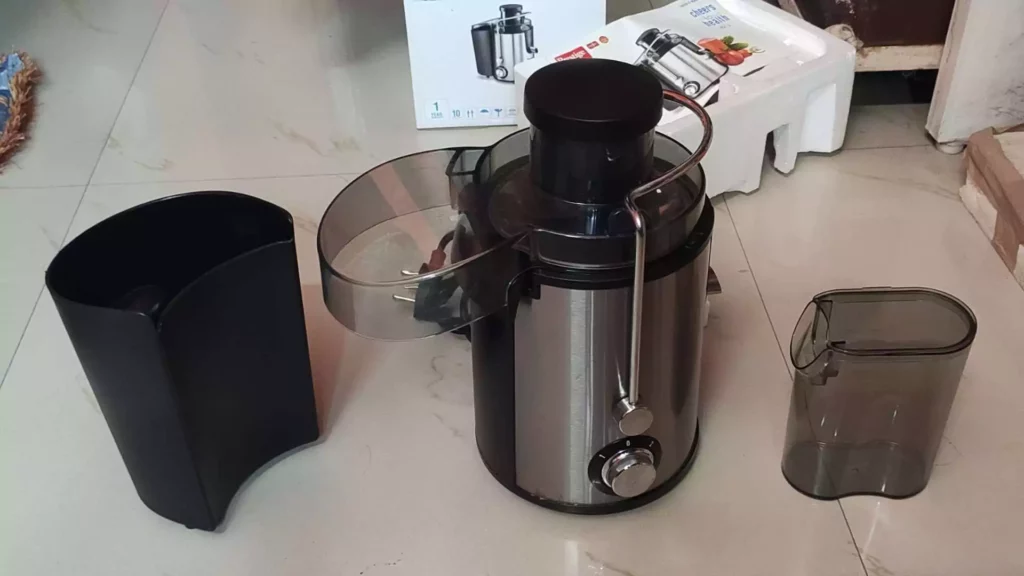
Are you someone who enjoys a daily glass of fresh juice or a nutrient-packed smoothie? If you own a juicer, odds are, it’s either a centrifugal or a masticating model. But which of these two types truly serves you best? To answer this, we’ll delve into the specifics of both centrifugal and masticating juicers, exploring their unique features and uses. Let’s demystify the world of juicing and find the perfect machine for your needs.
In the world of juicing, not all juicers are created equal. The type of juicer you choose can significantly impact the quality of your juice, and two main types rise above the rest: centrifugal and masticating juicers. Each has its own merits, quirks, and potential downsides, which can make the choice a bit overwhelming. Whether you’re a juicing novice on the quest for the perfect morning green juice, or a seasoned juicer consumer looking to upgrade your appliance, understanding these two juicing powerhouses can help you make an informed decision.
So, in this comprehensive guide, we delve deep into the centrifugal versus masticating debate, assessing the virtues and limitations of each. We’ll discuss their functions, performance, juice quality, and ease of use, along with other critical aspects like cost and noise level.
By the end, you will have a clearer picture of which juicer will best serve your needs, tastes, and lifestyle, empowering you to extract the most from your fresh fruits and veggies. So, without further ado, let’s jump into the centrifugal vs. masticating showdown. The juice is worth the squeeze!
Centrifugal Juicer:-
A centrifugal juicer is one of the most common types of juicers available on the market. Known for its high speed and efficiency, it’s a favorite among individuals who value quick juicing times and ease of use. The term “centrifugal” refers to the spinning force that the juicer uses to extract juice from fruits and vegetables.

How Does a Centrifugal Juicer Work?
A centrifugal juicer operates by using a sharp blade to chop up the fruit or vegetables at high speed, similar to a blender. Once the produce is chopped into small pieces, it is spun at high velocity against a round strainer or filter basket. The centrifugal force pushes the juice through the strainer and out of the juicer, leaving the pulp behind.

Mechanism of a Centrifugal Juicer
The centrifugal juicer’s mechanism is its unique selling point or highlight. As you feed fruits or vegetables into the juicer, they first encounter a rapidly spinning blade or disc. This disc tears the produce apart, breaking the plant cells open. The broken-down produce is then thrown against the juicer’s strainer basket. The small holes in the basket allow the juice to pass through, while the solid pulp is flung to the sides of the basket due to the centrifugal force. This pulp is later discarded, leaving you with fresh juice.
Practical Use and Specific Use of a Centrifugal Juicer
Centrifugal juicers are ideal for busy individuals who want a quick glass of juice without much fuss. These machines are particularly good at juicing hard and thick fruits and vegetables like apples, beets, and carrots. They are also a great choice for those new to juicing due to their simplicity and relatively low cost. However, they are less efficient at extracting juice from leafy greens like spinach or kale. Also, due to the high speed, they may produce more heat, which could lead to a slight loss of nutrients, though it would be minimal and negligible.
Centrifugal vs Cold Press Juicer (Masticating Juicer):
A masticating juicer, often referred to as a cold-press or slow juicer, is a device that uses a slower, more thorough method of extraction compared to its centrifugal counterpart. This juicer is known for its ability to preserve more nutrients due to the slower speed of juicing, and it’s a favorite among health enthusiasts seeking high-quality, nutrient-dense juices.
How Does a Cold Press Juicer (Masticating Juicer) Work?
A masticating juicer works by grinding or ‘chewing‘ the fruits and vegetables to break them down, hence the term ‘masticating’ which comes from ‘masticate‘, meaning to chew. This process is slow but efficient, effectively squeezing the juice out of the produce and separating it from the pulp. The juice is then collected in a container while the pulp is expelled into another.
The Mechanism of a Cold Press Juicer (Masticating Juicer)
A masticating juicer works kind of like a drill. It has a part called an auger, which looks like a big screw, in a small space. When you put fruits or veggies into the juicer, they get squashed against the auger. This action opens up the plant parts and lets the juice come out. The solid bits, or pulp, get pushed to the end of the small space, where there’s a lot of pressure. This lets the juicer get a lot of juice out, even from hard-to-juice stuff like leafy greens or fibrous fruits and veggies.
Practical Use and Specific Use of a Cold Press Juicer (Masticating Juicer)
Masticating juicers are particularly suitable for those who prioritize the quality of their juice over SPEED. These machines excel at juicing leafy greens, wheatgrass, and even soft fruits, which can be challenging for centrifugal juicers. Moreover, they can often be used to make nut milk, baby food, and even sorbets, making them versatile kitchen appliances. However, they are generally more expensive and operate slower compared to centrifugal juicers. Despite this, their ability to retain a high nutrient content and yield more juice makes them a popular choice for health-conscious individuals.
Centrifugal vs. Cold Press Juicer (Masticating Juicer): Which is Better for Home and Commercial Use?
The best type of juicer, whether for home or commercial use, largely depends on individual needs, preferences, and the type of produce you plan to juice most often. Let’s try to get some more information on this.
For Home Use:
If you are a health enthusiast who often juices a wide variety of fruits and vegetables, including leafy greens and soft fruits, a masticating juicer would be a better choice for home use. It operates slower but yields high-quality, nutrient-dense juice with a longer shelf life due to less oxidation. Additionally, masticating juicers tend to be quieter, which is an appreciated feature in a home setting.
However, if speed and convenience are your top priorities, then a centrifugal juicer may be more suitable. It’s perfect for those who like a quick glass of juice from hard fruits and vegetables and are not as concerned about getting the maximum yield or nutrient preservation.
For Commercial Use:
In a commercial setting where speed and volume are essential, a centrifugal juicer might be the better option. These juicers can produce juice quickly, catering to high customer demand, especially in settings like a cafe or a restaurant where quick service is crucial.
On the other hand, a masticating juicer would be a great choice for juice bars or health food stores where the quality of juice and nutrient preservation are highly valued by customers. Even though they operate slower, masticating juicers produce a greater yield, which can reduce waste and potentially save costs over time.
In the end, the “best” juicer is subjective and heavily relies on one’s specific needs, budget, and what they’re planning to juice most frequently. It’s always important to assess these factors before making a purchasing decision.
To make the comparison more accessible, especially for beginners, we’ve compiled a table detailing the pros and cons of both types of juicers. This overview will give you a clear idea of their respective advantages and shortcomings, as well as their specific uses. Let’s dive into the comparison of masticating and centrifugal juicers.
| Features | Centrifugal Juicer | Cold Press Juicer (Masticating Juicer) |
| Speed | High-speed juicing, often completed in seconds | A slower juicing process |
| Noise Level | Generally louder due to the high speed of operation | Quieter operation due to slower speed |
| Juice Quality | Good, but may be less nutrient-dense due to heat and oxidation | Excellent, higher nutrient content preserved due to the cold-press mechanism |
| Juice Yield | Lower yield, especially with leafy greens or soft fruits | Higher yield, efficient even with leafy greens and soft fruits |
| Best For | Hard and thick fruits and vegetables | Leafy greens, wheatgrass, and soft fruits |
| Ease of Use | Simple and straightforward, great for beginners | Slightly more complex, and might require some learning |
| Clean-Up | Generally easy to clean, with fewer parts | Can be more challenging to clean due to more components |
| Price | Usually less expensive, making it a budget-friendly choice | More expensive, and considered an investment for serious juicers |
Final Words
When deciding between a masticating and centrifugal juicer, your choice ultimately comes down to your lifestyle, budget, and juicing needs.
While reading this article, Centrifugal vs Masticating: Which Juicer Will Serve You Best? The final choice, however, hinges on your personal needs, preferences, and what you plan to juice most often.
If you’re always on the go and prefer a quick, straightforward juicing process, the centrifugal juicer may be your ideal companion. And we have added everything above in this article while comparing both.
In contrast, if your priority leans towards nutrient-rich juice, maximizing yield, and you don’t mind spending a little more time on juicing, the masticating juicer will serve you best.
The best juicer for you ultimately depends on your unique circumstances and goals. Consider all the factors, and choose a juicer that fits your lifestyle and serves you best in your quest for health and vitality. Happy juicing!








